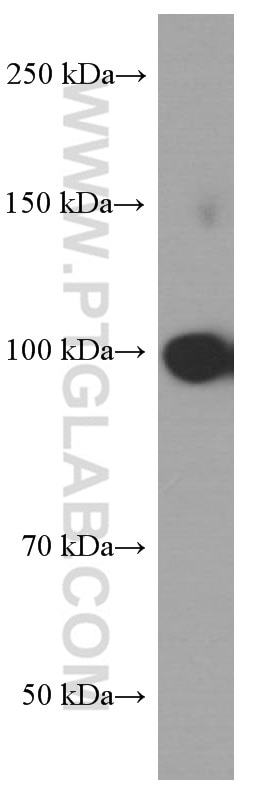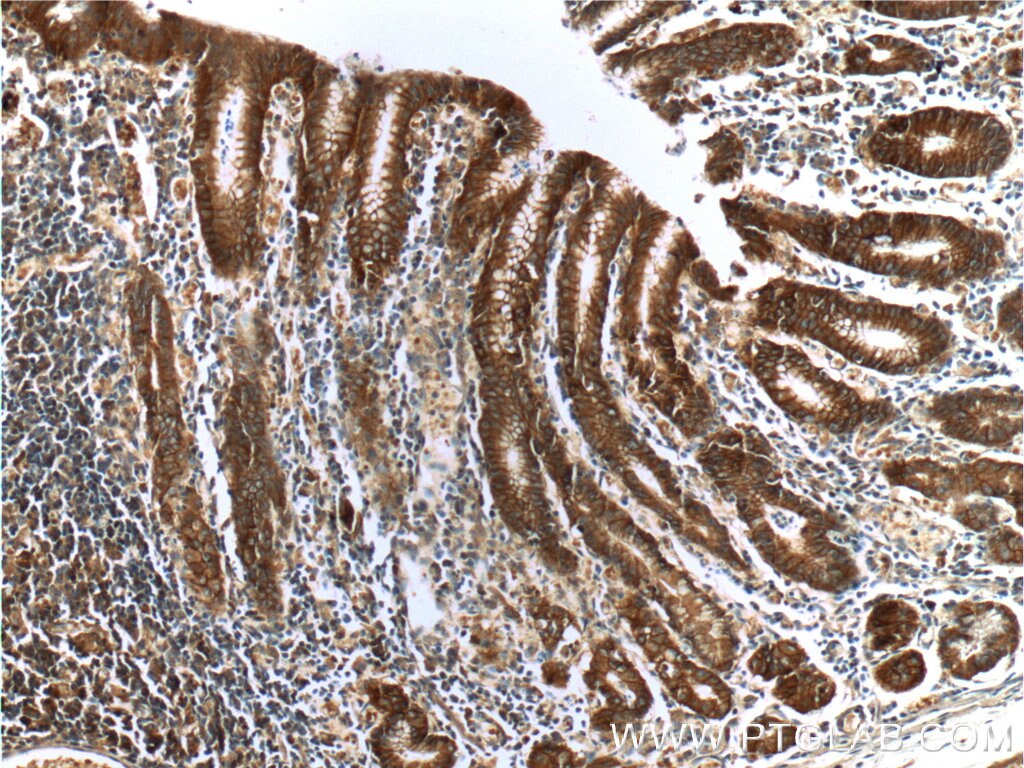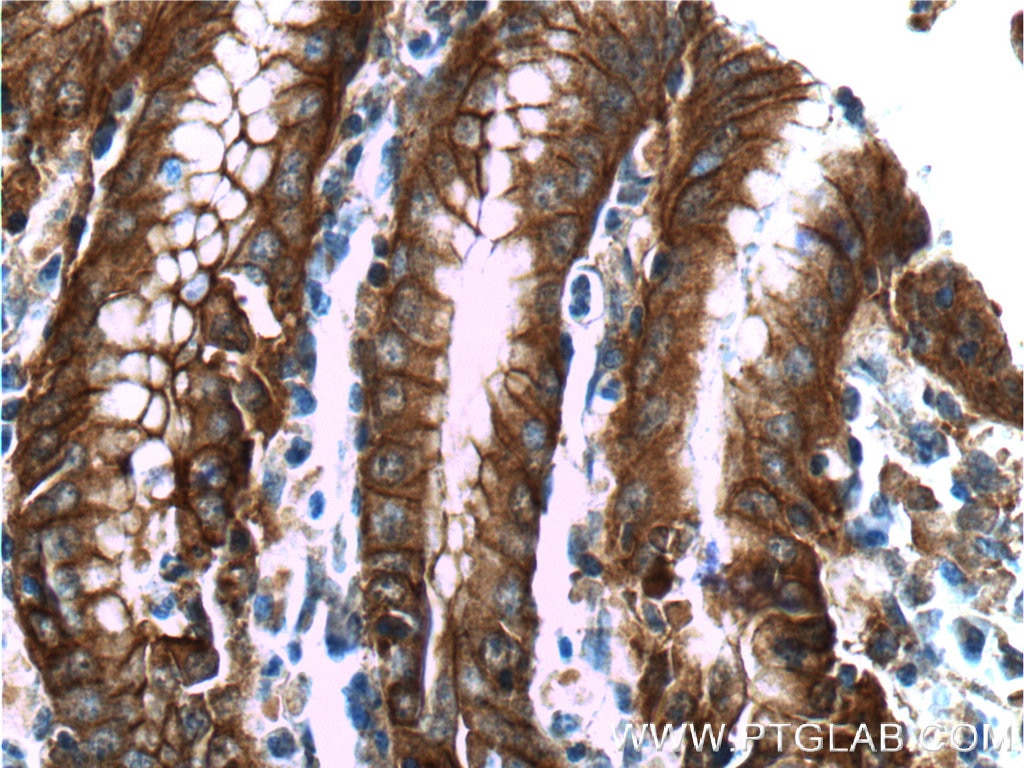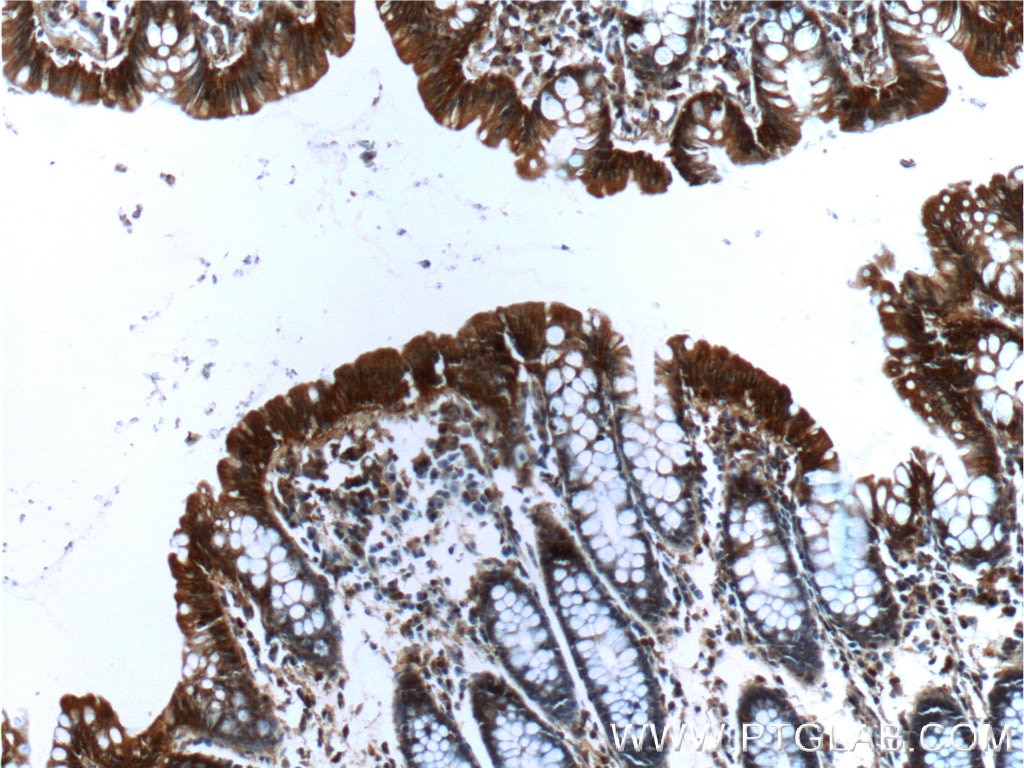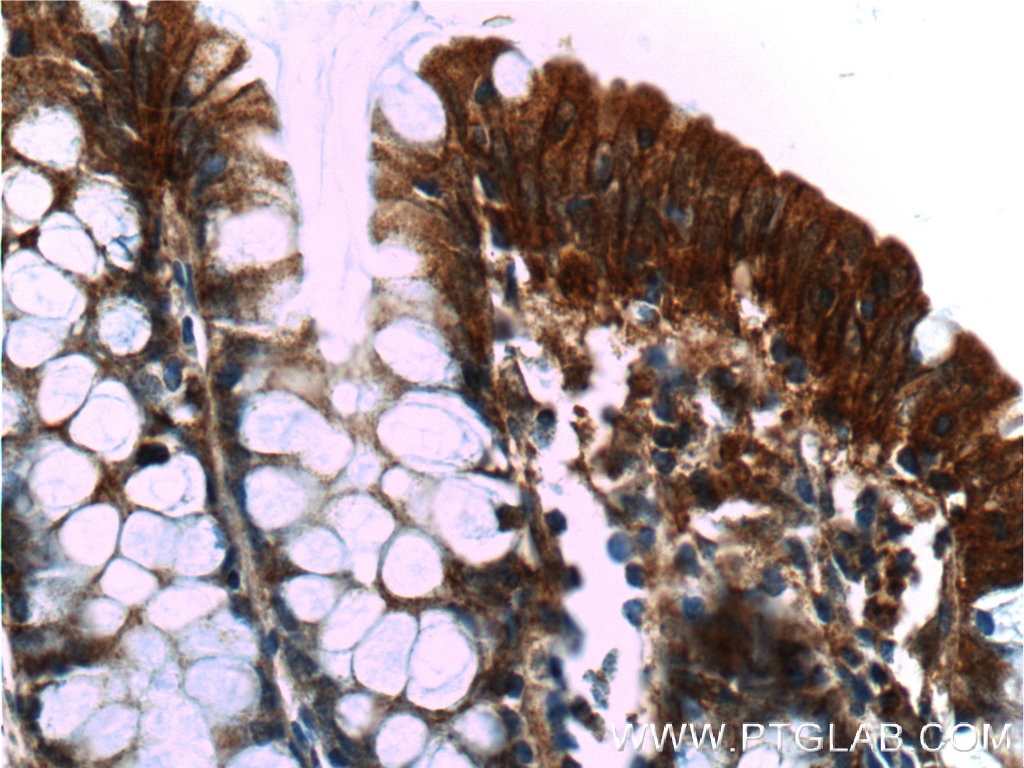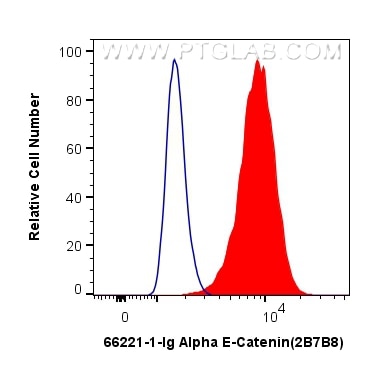Alpha E-Catenin Monoklonaler Antikörper
Alpha E-Catenin Monoklonal Antikörper für FC, IHC, WB, ELISA
Wirt / Isotyp
Maus / IgG1
Getestete Reaktivität
human, Maus
Anwendung
WB, IHC, FC, ELISA
Konjugation
Unkonjugiert
CloneNo.
2B7B8
Kat-Nr. : 66221-1-Ig
Synonyme
Galerie der Validierungsdaten
Geprüfte Anwendungen
| Erfolgreiche Detektion in WB | NIH/3T3-Zellen |
| Erfolgreiche Detektion in IHC | humanes Magengewebe, humanes Kolongewebe Hinweis: Antigendemaskierung mit TE-Puffer pH 9,0 empfohlen. (*) Wahlweise kann die Antigendemaskierung auch mit Citratpuffer pH 6,0 erfolgen. |
| Erfolgreiche Detektion in FC | MCF-7-Zellen |
Empfohlene Verdünnung
| Anwendung | Verdünnung |
|---|---|
| Western Blot (WB) | WB : 1:500-1:2000 |
| Immunhistochemie (IHC) | IHC : 1:50-1:1000 |
| Durchflusszytometrie (FC) | FC : 0.40 ug per 10^6 cells in a 100 µl suspension |
| It is recommended that this reagent should be titrated in each testing system to obtain optimal results. | |
| Sample-dependent, check data in validation data gallery | |
Veröffentlichte Anwendungen
| WB | See 2 publications below |
| IHC | See 2 publications below |
Produktinformation
66221-1-Ig bindet in WB, IHC, FC, ELISA Alpha E-Catenin und zeigt Reaktivität mit human, Maus
| Getestete Reaktivität | human, Maus |
| In Publikationen genannte Reaktivität | human, Maus |
| Wirt / Isotyp | Maus / IgG1 |
| Klonalität | Monoklonal |
| Typ | Antikörper |
| Immunogen | Alpha E-Catenin fusion protein Ag23603 |
| Vollständiger Name | catenin (cadherin-associated protein), alpha 1, 102kDa |
| Berechnetes Molekulargewicht | 906 aa, 100 kDa |
| Beobachtetes Molekulargewicht | 95-100 kDa |
| GenBank-Zugangsnummer | BC031262 |
| Gene symbol | CTNNA1 |
| Gene ID (NCBI) | 1495 |
| Konjugation | Unkonjugiert |
| Form | Liquid |
| Reinigungsmethode | Protein-A-Reinigung |
| Lagerungspuffer | PBS mit 0.02% Natriumazid und 50% Glycerin pH 7.3. |
| Lagerungsbedingungen | Bei -20°C lagern. Nach dem Versand ein Jahr lang stabil Aliquotieren ist bei -20oC Lagerung nicht notwendig. 20ul Größen enthalten 0,1% BSA. |
Hintergrundinformationen
Alpha catenin is an essential component of adherens junctions that connects E-cadherin-β-catenin complexes with the actin cytoskeleton. It also recruits a range of other important proteins to developing intercellular junctions. Three alpha catenins exist in human: alpha-E-catenin, alpha-N-catenin, and alpha-T-catenin, which share substantial amino-acid sequence similarity but have distinct tissue distribution. alpha-E-catenin is ubiquitously expressed, alpha-N-catenin is restricted to neuronal tissue, and alpha-T-catenin is primarily expressed in heart tissue. Reduced levels of alpha-E-catenin protein seem to be characteristic of many different human cancers, including malignant tumours of the breast, colon, stomach, oesophagus, bladder and liver. In addition, the loss of alpha-E-catenin often correlates with the degree of tumour differentiation and metastasis.
Protokolle
| Produktspezifische Protokolle | |
|---|---|
| WB protocol for Alpha E-Catenin antibody 66221-1-Ig | Protokoll herunterladen |
| IHC protocol for Alpha E-Catenin antibody 66221-1-Ig | Protokoll herunterladen |
| FC protocol for Alpha E-Catenin antibody 66221-1-Ig | Protokoll herunterladen |
| Standard-Protokolle | |
|---|---|
| Klicken Sie hier, um unsere Standardprotokolle anzuzeigen |
Publikationen
| Species | Application | Title |
|---|---|---|
Int J Mol Sci Histological and Immunohistochemical Studies to Determine the Mechanism of Cleft Palate Induction after Palatal Fusion in Mice Exposed to TCDD. | ||
Oncotarget YAP1 enhances cell proliferation, migration, and invasion of gastric cancer in vitro and in vivo. | ||
Mol Med Rep Wild-type KRAS inhibits the migration and invasion of pancreatic cancer through the Wnt/β-catenin pathway |
